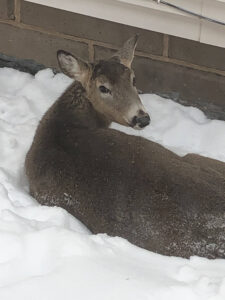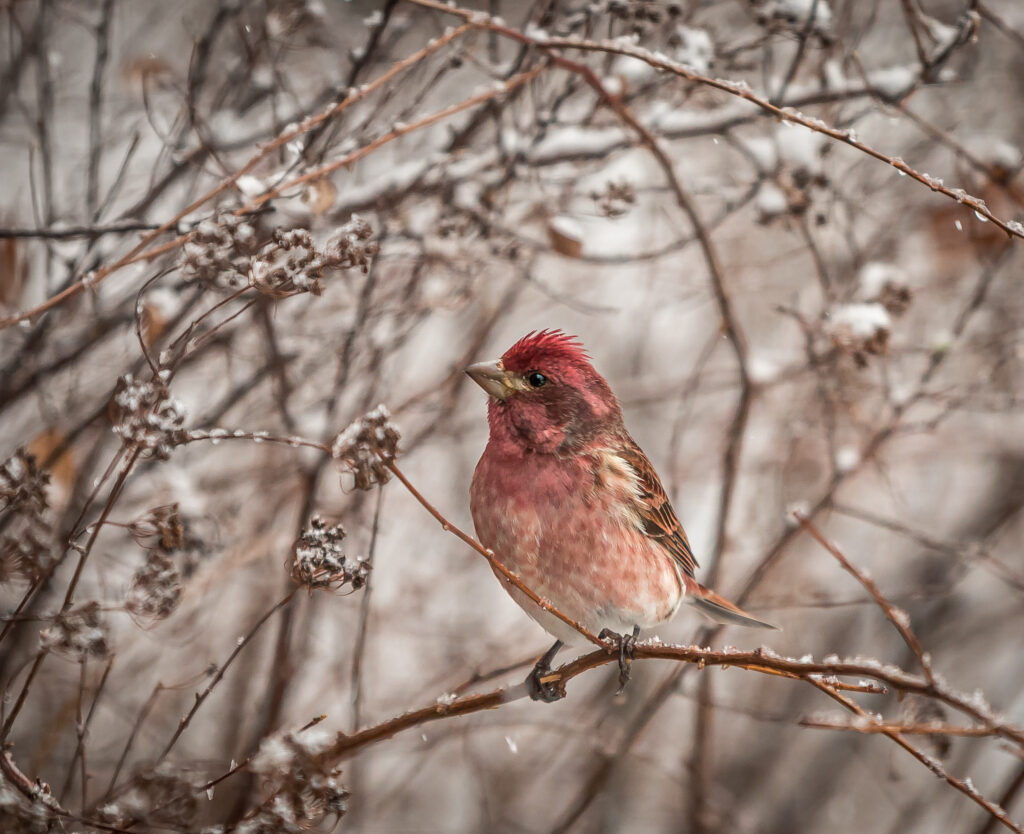Imagine these words sung to the tune of Let it Snow:
Oh, the weather outside is frightful…
But feeding deer is not delightful.
Though the birds may need a treat,
Let deer forage, let deer forage, let deer forage.
This above parody of a traditional holiday song gives you what you need to know about feeding deer and birds in a nutshell. As winter settles in, many of us feel a natural urge to help wildlife by providing food, especially for deer and birds. However, while feeding birds can be a safe and rewarding way to support feathered friends during cold months, feeding deer can do more harm than good.
The Problem with Feeding Deer
Though it may seem like an act of kindness, feeding deer during winter can have serious negative consequences. Jessica LaBumbard, executive director of Wildwoods, a wildlife rehabilitation organization in Duluth, explains that deer are naturally adapted to survive on limited food in winter. “Deer store fat to get through the cold months, and their metabolism slows down to conserve energy,” she says. They can find enough natural food under the snow without human intervention.
However, feeding deer disrupts this natural process. Overeating, especially foods outside their natural diet, can lead to dangerous health conditions like bloat and enterotoxemia (grain overload), which can be fatal. Deer can also become more susceptible to disease when drawn to human-provided food sources, which can weaken their immune systems.
In Minnesota, feeding deer is illegal in some areas, including Duluth and Two Harbors. “It’s prohibited because it can lead to disease outbreaks and alter deer behavior,” LaBumbard notes. For instance, deer that become accustomed to human food may lose their natural foraging skills and wander into populated areas, where they risk accidents or collisions with vehicles.

Why Feeding Birds is Different
Unlike deer, feeding birds during winter is generally safe. Birds don’t become dependent on feeders, and their foraging instincts remain intact. “Feeding birds doesn’t harm them,” LaBumbard says. “It’s a nice way for people to connect with nature while helping out during tough times, like extreme cold or when food is scarce.”
Winter bird feeding can supplement natural food sources, especially in severe weather, but it’s not necessary for their survival. In fact, birds are well-equipped to find food on their own. However, supplemental feeding can provide additional energy during harsh conditions. And migrating birds appreciate an easy food source.
Danger of Predators and Rodents
“Rodents and small animals are drawn to the food around bird feeders,” LaBumbard warns. “And where there are small animals, their predators—like hawks and foxes—are sure to follow. It creates an unnatural concentration of animals in one area, which increases the risk of disease.”
What to Feed Birds in Winter
If you decide to feed birds, it’s important to choose the right food. The Minnesota Department of Natural Resources (DNR) recommends a few types of seeds that can help birds stay nourished:
• Sunflower seeds are high-energy and loved by species like chickadees, blue jays, and cardinals.
• Thistle seeds (nyjer) are smaller and ideal for finches and pine siskins.
• Suet (animal fat mixed with seeds or peanut butter) is perfect for woodpeckers and chickadees, providing essential energy during cold spells.
These foods offer birds a boost of energy when natural sources are hard to find, and they can help attract a variety of species to your yard.
Remember to Clean Your Bird Feeder
While feeding birds is generally harmless, cleaning your bird feeder is a must to practice responsible feeding. One concern is disease transmission, as birds can spread illnesses when they congregate around feeders. To prevent this, clean your feeders regularly with a 10% bleach solution and let them dry completely before refilling.
Also, be mindful of where you place your feeders. Avoid locations where birds might crash into windows—either place them close (within 3 feet) or far away (more than 30 feet) to reduce the risk of accidents.
Habitat Over Feeders
Although feeding birds is a helpful supplement, creating bird-friendly habitats is even more critical. Native plants like mountain ash or spruce trees can provide both food and shelter, offering birds a safe space to thrive year-round. “Planting native trees and shrubs is the best way to support wildlife long-term,” says LaBumbard. “It offers shelter, food, and even breeding places for birds.”
Family Bonding through Birdwatching
Feeding birds isn’t just an opportunity to help wildlife—it’s also a chance to bond with family and teach children about nature.
“My daughter did a science fair project to see if there’s a difference in the number of birds meeting at the feeders and different weather conditions, whether or not it’s like a cold clear day or a really snowy day. That was a really fun project that we did together,” said Gaea Crozier, a Minnesota DNR wildlife specialist. “It was a fun way to learn about birds and the seasons.” Her children also cut out construction paper decorations to tape to the windows to prevent the birds from flying into the windows.
Bird feeding can also provide a unique way to engage in citizen science, such as participating in the Audubon Christmas Bird Count and helping track local bird populations while learning more about them.
Let Deer Forage, and Enjoy Feeding Birds
Feeding deer during winter can have dangerous consequences, including health issues, disease, and destructive behavior changes. Instead, allow deer to forage naturally. On the other hand, feeding birds can be a safe, enjoyable way to support wildlife while also connecting with nature. Offering the right foods and focusing on habitat creation can help sustain local wildlife while fostering a deeper appreciation for the natural world.
So, this winter, keep the deer foraging and the birds well-fed—while taking care to do so responsibly.
See these websites for more information:
dnr.state.mn.us/birdfeeding/winter.html
dnr.state.mn.us/wildlife/research/health/ feeding/deer.html

